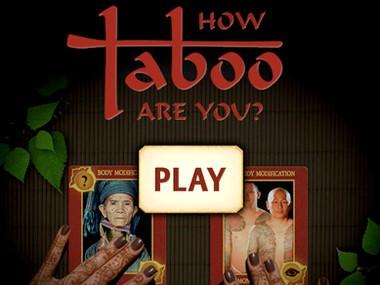There once was a time when anthropologists (and sociologists) struggled mightily to explain taboos — they come in such a variety of shapes and sizes that this proved a difficult task. Though often associated with animist ideas and religious formations, taboos cut across cultural categories and appear in all facets of life. Even people who don’t think they have taboos (and consider them stuff of superstition) act in accordance with them. Given the universality of taboos, it seems unlikely that any one theory or explanation will suffice. This doesn’t mean, however, that they are inexplicable.
In this delightful piece, Boris Johnson imagines being a Martian anthropologist doing fieldwork among the British and French. He observes that the Brits consider eating horsemeat taboo, whereas the French love their Seabiscuit. To explain this difference between two societies that are otherwise so similar, he draws on Durkheim’s idea that taboos are used to bind people together and create distinct identities:
It’s all about control. This amusing species called Homo sapiens has only lately emerged from prehistoric savagery; and what the human race fears most is a return to that darkness and disorder. So over the millennia the human race evolved the idea of taboo, as a way of creating social cohesion.
Things were deemed to be nefastus, haram, forbidden. Individually and collectively, people developed little electric fences in the mind, and by agreeing on what was taboo they defined themselves; they defined themselves in opposition to others; and they helped to create a crucial sense of identity. By controlling small aspects of behaviour, society helped to control the big ones.
Taboo, you conclude, was important in the creation of order. With growing excitement you continue your researches, and you observe several characteristics of taboos. They may become detached from their original rationale – shellfish and pork are less likely to give you food poisoning these days – and yet still have great force.
Taboos are psychologically powerful since they affect inescapable features of human experience: diet, reproduction, sexual behaviour, menstruation, defecation and so on….
As you get back into your spaceship, you draw several conclusions for the paper on human taboo that you will present to your fellow Martian anthropologists. You decide that taboos vary from country to country because in a way it doesn’t matter exactly what the prohibition is: what matters is the fact of the taboo; and the process of agreeing – and changing – the boundaries of acceptable behavior is central to what makes a society.
By this Durkheimian (and social-functional) rendering, the important thing about taboos is not their content or substance, but as Boris says, the fact that they exist. Nothing else really matters.
While there surely is truth in this assessment of taboos, there is also something odd about ignoring what people actually say about taboos and why they observe them. Durkheim’s social-functional theory is nice, but it completely disregards — or considers unimportant — what people say about taboos. It’s as if the anthropologist observer is the only one who really knows what is going on behind the curtain — everything else is illusion. In contrast to this condescending approach, there exists the possibility that taboos exist for the reasons that people say they do, and that taboos actually do what people think they do. There is a certain scholarly conceit in asserting that beneath all this, something else is really going on and we know what it is. I’m not saying this isn’t the case, but we shouldn’t be so quick to discount (or see beneath) the explanations that are given. This was a point powerfully made, in a different but related context, by Robin Horton in his article “Neo-Tylorianism: Sound Sense or Sinister Prejudice” (1968). If you haven’t read the article or Horton’s other work, including his classic on African traditional thought and western science, I highly recommend them. Sometimes things are what they seem, even taboos.


